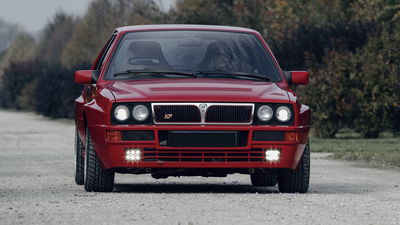Engineering Explained: The Pros And Cons Of Inline-Three, VR6, and V12 Engines

1. Inline-Three Engines

Though the inline-three cylinder engine has been around for quite some time, increasing demand for better fuel economy has propped up its popularity. Eco cars such as the Smart ForTwo and the Toyota iQ aren’t the only ones taking advantage of this engine’s efficiency. Nissan has used it as a backup power plant in the world’s fastest electric race car, and BMW has a turbo three-pot planted in the new i8.
Advantages
- Size/Weight: The engine is compact, easy to package, and lightweight.
- Fuel Economy: Smaller displacement engines typically yield better fuel economy.
- Frictional Losses: Fewer cylinders mean fewer moving parts which lead to less energy lost through friction.
- Cost: Cheap to build.
- Vertical Balance: Primary and secondary forces are well balanced vertically (forces sum to zero).
Disadvantages
- Plane Imbalance: Though the vertical forces sum to zero, the moments do not, which causes the engine to rock back and forth from front to back (from cylinder one to cylinder three).
- Heavy Crankshaft: As a result of the rocking moment described above, a decent sized crankshaft is needed to reduce vibration.
- Rough Power Delivery: Compared to engines with higher cylinder counts, the power delivery of an I3 is not as smooth, as there is 60 degrees of crankshaft rotation without a power stroke within the 240 degrees that each power stroke occurs.
- Power Output: Typically due to smaller displacement, I3s do not usually produce high power output. This is often overcome through turbocharging, if higher output is desired.
Here’s a quick video explaining inline three-cylinder engines:
2. VR6 Engines

Advantages
- Packaging: Narrow when compared to a V6, shorter in length when compared to straight-six. This makes the engine great for fitting into front-wheel drive cars.
- Well Balanced: The engine balancing is very similar to a straight-six, so it’s a low vibration engine.
- Simplicity: Single cylinder head and only two cams for true DOHC, this layout doesn’t require two cylinder heads and valve-trains like a traditional V6.
- Simple Exhaust: Because all of the exhaust exits one side of the engine, two exhaust manifolds/headers are not required like on a V6. This can save weight and make packaging easier.
- Displacement: Allows for greater displacement than an inline-four engine, which is similar (though slightly smaller) in packaging size.
Disadvantages
- Weight: Compared to a four-pot, it’s a heavier engine.
- Cost and Complexity: Compared to an inline-four, it has more moving parts and cylinder bores which are not perpendicular to the block. These complexities increase cost.
- Packaging: An inline-four is still a smaller package, both in length and width.
- Bore Size: Due to the angle of the cylinders, the bored cylinders are closer at the bottom of the block than at the top. A certain wall thickness is required in order to maintain proper cooling and rigidity, so increasing the bore size means significantly increasing the block size, making the engine larger and heavier.
- Fuel Economy: Advancements in turbocharging have allowed four cylinders to create desired power outputs that were traditionally made with naturally-aspirated, larger displacement engines, all while achieving better fuel economy. Turbo four cylinders have already started replacing VR6 engines.
Here’s a detailed explanation on VR6 engines, as well as footage of an actual block and sound clips:
3. V12 Engines

Advantages
- Minimal Vibration: V12 engines are two straight-sixes matched to a common crank. This means they’re inherently balanced at any V angle.
- Smooth Power Delivery: The V12 has a piston firing every 60 degrees of crankshaft rotation, giving it one of the smoothest power deliveries of any engine.
- Free Revving: Because the engine is naturally balanced, the crankshaft can be made with minimal counterweight, reducing rotational inertia.
- Power: Small cylinders make high revs easier, and large displacement means more air and fuel. Both of these factors lead to big power numbers from V12 engines.
Disadvantages
- Cost: As expected, this isn’t a cheap option.
- Complexity: With 12 pistons, and often 48 valves, the number of moving parts lead to a complex engine.
- Size: Be sure to provide plenty of space to package in a massive V12 in your engine bay.
- Weight: It’s a big heavy engine. Of course, you can always spend more money on lighter materials.
Here’s a quick video explaining V12 engines, and why they often rev so high:
Check out Engineering Explained’s previous articles:
- The pros and cons of different engine types.
- The pros and cons of superchargers vs turbochargers.
- Inline 5, V10, and rotary engines.
- Engineering Explained: Cold Air Intakes Vs Short Ram Intakes













Comments
No comments found.